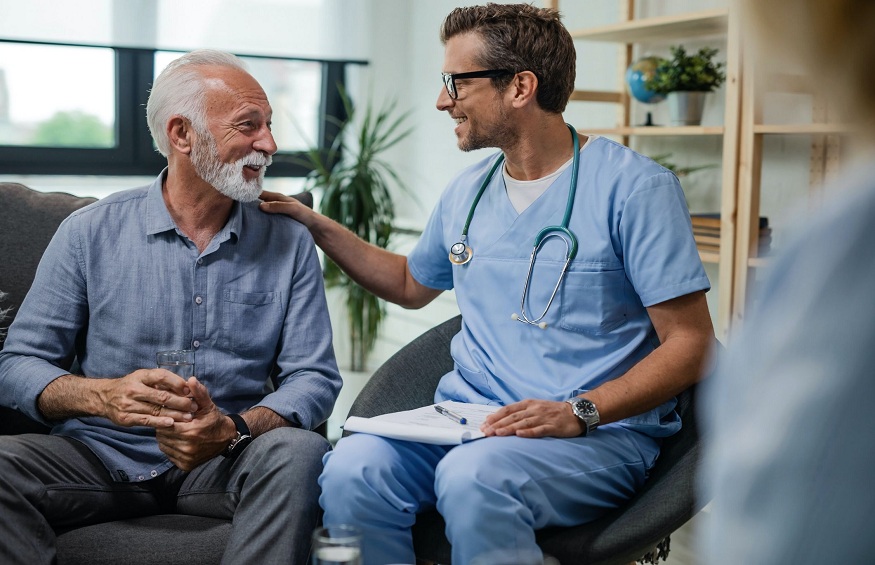This June 21, was celebrated the 1st International Day of Yoga, about which the Vice-President of the General Assembly of the United Nations (UN) had recalled that: “for centuries, people from all walks of life have practiced yoga that puts thought in harmony with action and advocates a holistic approach to health and well-being” .
Yoga, a discipline focused on working on yourself, aims to create harmony between your mind, your consciousness and your body. For yoga, as for the traditional and holistic Indian medicine that is Ayurveda, there is a continuum between body and mind. Yoga for better health is therefore part of a global vision of being that supports a state of full health as defined by the WHO: “health is not only the absence of disease or infirmity, but a state of total well-being, physical, mental and social” .
But yoga, which has been on the rise in recent years and continues to see its number of followers increase, is it an art of living or a therapy? Both, no doubt! Multiple paths and approaches to yoga exist, but let’s focus on the psycho-physical practices of yoga as mostly offered in the West, on its benefits… but also, first of all, on its potential risks.
Yoga, a risky practice?
A New York Times Magazine article published on January 5, 2012 under the title “ How Yoga Can Wreck Your Body ” had a strong impact. The scientific journalist William J. Broad recounts his painful experience and explains that the postures proposed are far too complex for most followers. He denounces the fact that yoga is intended for people in good physical condition and that many less fit practitioners expose themselves to the risk of injury.
However, what is most often the subject of these criticisms are forms of yoga practiced as sports with a spirit of competition and performance, for the most part of Anglo-Saxon origin.
When you practice yoga, you must therefore ask yourself about the way it is practiced in certain centers or by certain teachers:
For example, health professionals warn against practices in high heat, the risks of which are, on the one hand, to stretch parts of the body too much, to the point of damaging muscles or ligaments and even tearing cartilages and, on the other hand, to cause abnormally high body heat.
Regarding yoga teachers, the profession is currently not regulated in France and the training offered by schools or federations remains disparate and unequal.
And, of course, we must be vigilant about the excesses of those who voluntarily deviate from yoga, including in the field of health. In this regard, read our article ” Alternative medicine: beware of the guru!” “.
However, ethically sound yoga teachers agree that “yoga that hurts is yoga done badly”. An injury therefore first appears as a sign of bad practice. Thus, it is appropriate for each person wishing to learn yoga to find the practice that suits them best.
Recommendations for a good approach to the practice of yoga
In a classic yoga session, we generally find each of these different elements: concentration, postures, breathing, synchronization between gesture and breathing, relaxation and meditation.
The intensity and the time devoted to these different parts differ from one course to another. It is recommended to choose yoga adapted to your age, state of health and level in order to limit the risks associated with this practice. Depending on your situation, you will be tempted to try dynamic or, on the contrary, relaxing yoga. If you are new to yoga, a beginner class will allow you to enroll in a progressive approach.
“A yoga that hurts is a badly done yoga”
A good teacher will be the one with whom you will feel confident, will take the time to welcome you, will offer you an adapted practice and will be able to correct you. For this last reason, in the beginning, independent practice is not recommended. During the practice, stay focused, listening to your body, feeling it and accepting your limits without looking for performance. If it forces you to know when to stop. It is also a major teaching of yoga to respect your body.
Yoga for global and preventive health
The practice of yoga responds to a large extent to the recommendations of doctors in that they recommend exercise, movement of the body, relaxation and good breathing. The postures, by their diversity, invite to mobilize the whole body and more particularly the back by movements favorable to its flexibility and its tonicity. The yogic posture also promotes the optimal alignment of the body, the good muscular balance and helps to become aware of the tensions registered in the body to release them. Yoga provides relaxation while bringing energy. If the benefits are physical, they are also psychological. As such, we realize that yoga does not have the effect of making your body work so much as of calming your mind and emotions. From a physiological perspective,
There are many testimonials from participants who “feel good” after a yoga session. Regular practitioners, on the other hand, often find that yoga has naturally led them to be more mindful of their lifestyle . As for the beneficial effects of yoga in reducing stress, now recognized by several studies, they also represent an interest in the prevention of cardiovascular accidents.
More broadly, yoga as a method of physiological and psychological self-regulation empowers us by inviting us to appropriate our body to move from an object body to a subject body, and thus become an actor in our own health.
Yoga and health, towards a new therapeutic approach?
Some scientific studies highlight the benefits and benefits of yoga to reduce the side effects of many pathologies. We will not list here the long list of various disorders (respiratory, digestive, endocrine, genito-urinary, cardiovascular, orthopedic, neuro-muscular, psychic, nervous…) for which a followed and adapted practice of yoga could be recommended. In any case, the absence of adverse effects and the excellent cost-benefit ratio are significant aspects that are systematically mentioned in the studies.
For example, a reduction in the side effects of chemotherapy has been observed by reducing the inflammatory reaction in the case of cancer or, greater efficiency of the hands and better control of blood glucose levels. in the case of diabetes.
On another level, yoga can help in the face of a body affected by an illness or a disability, allowing the person to change their perception and reconnect with it in a positive and constructive way.
Yoga benefits from the popularity of complementary and alternative therapies. A discipline called “yogatherapy” has developed: the practice is individual and personalized, thought out in coherence with the patient’s medical course, and, of course, it does not replace treatment.





